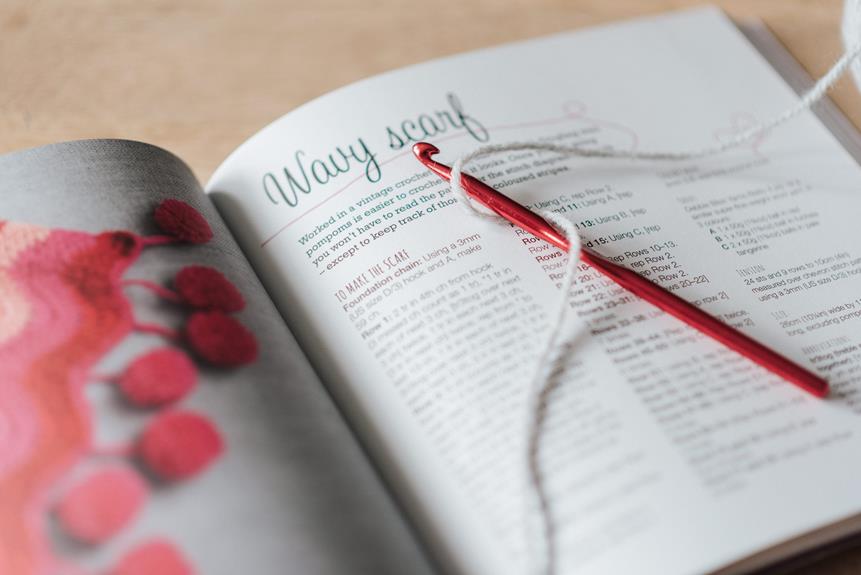If you're navigating the vast ocean of marine thread options, it's like searching for the perfect fishing spot: you want to cast your line where the big catches are.
In this guide, you'll discover everything you need to know about marine thread. From the importance of choosing the right thread to the best materials and sewing tips, consider this your compass for mastering marine thread.
Whether you're an experienced sailor or a novice navigating these waters, this comprehensive resource will equip you with the knowledge to confidently select, sew, and maintain marine thread for all your nautical endeavors.
Key Takeaways
- Choosing the right marine thread is crucial for durability and resistance to harsh marine conditions.
- Different types of marine thread, such as polyester, nylon, PTFE (Teflon), and bonded polyester, have specific advantages for various marine projects.
- Consider material options that are UV resistant, mildew resistant, and less harmful to the environment.
- Matching thread size to the needle and fabric weight is essential for smooth stitching and preventing damage.
Importance of Marine Thread
When sewing marine equipment, choosing the right marine thread is crucial for ensuring durability and resistance to harsh marine conditions. Thread performance is essential in withstanding the constant exposure to saltwater, UV rays, and extreme weather. The right marine thread will maintain its strength and integrity over time, preventing seam failure and ensuring the longevity of the equipment it secures.
Environmental impact is another key consideration when selecting marine thread. The thread used in marine applications must be able to withstand exposure to saltwater without degrading and potentially causing harm to the marine environment. Choosing a thread that's resistant to mold and mildew growth is also important to prevent any negative impact on the surrounding ecosystem.
When selecting marine thread, it's important to consider the materials used and their potential environmental impact. Opting for threads made from materials that are less harmful to the environment, without compromising on performance, is a responsible choice. By choosing the right marine thread, you can ensure the longevity and environmental sustainability of your marine equipment.
Types of Marine Thread
When it comes to marine thread, there are various material options available to consider, each with its own set of advantages.
Additionally, thread size variations play a crucial role in determining the suitability of a thread for a specific application.
Lastly, understanding the different application-specific thread types will help you choose the right marine thread for your particular needs.
Material Options Available
Explore the various material options available for marine thread to find the best fit for your specific needs. When comparing marine threads, it's essential to consider the sewing techniques you'll be using and the specific characteristics of each material. Here is a comparison of the most common marine thread materials:
| Material | Characteristics | Best Used For |
|---|---|---|
| Polyester | UV resistant, low stretch, mildew resistant | Outdoor upholstery |
| Nylon | High strength, elasticity, abrasion resistance | Sails, canvas, covers |
| PTFE (Teflon) | Chemical resistance, low friction, heat resistant | Marine canvas, leather |
Each material offers distinct advantages, making it crucial to select the right one based on your project requirements and sewing techniques. Whether you need UV resistance, high strength, or chemical resistance, there's a marine thread material suitable for your specific application.
Thread Size Variations
To understand the different types of marine thread, consider the various thread size variations available for your specific sewing needs. Thread compatibility and size limitations are crucial factors to consider when choosing the right marine thread.
Different thread sizes are suitable for various fabric weights and types, so understanding thread tension and stitching techniques is essential for achieving the best results. It's important to match the thread size to the needle and fabric to ensure smooth stitching and prevent potential damage to the material.
Keep in mind that using the wrong thread size can result in loose or tight stitching, affecting the overall durability and appearance of your marine projects. Mastering the knowledge of thread size variations will greatly enhance your sewing skills and the quality of your finished products.
Application-Specific Thread Types
Once you have determined the appropriate thread size for your marine sewing project, it's important to consider the application-specific thread types that best suit your intended use. Different sewing techniques and thread compatibility play a crucial role in achieving the desired results. Here are three common application-specific thread types used in marine sewing:
| Thread Type | Description | Best Use |
|---|---|---|
| Bonded Polyester | Strong and UV-resistant, suitable for outdoor projects | Sail making, boat covers |
| Monofilament Nylon | Transparent and flexible, ideal for invisible seams | Clear vinyl windows, upholstery |
| PTFE (Teflon) Thread | Chemical and heat-resistant, perfect for specialized applications | Chemical-resistant projects, high-temperature environments |
Understanding the specific characteristics and best applications of these thread types will help you select the most suitable one for your marine sewing project.
Factors to Consider When Choosing Marine Thread
When choosing marine thread, there are several important factors to consider.
You'll want to prioritize material durability and strength to ensure the thread can withstand the harsh marine environment.
Additionally, resistance to water damage and the availability of different thread thickness options are crucial considerations for finding the right marine thread for your needs.
Material Durability and Strength
Considering the demanding conditions marine threads are subjected to, you should prioritize material durability and strength when selecting the right thread for your marine projects. The material's ability to withstand harsh marine environments and provide long-lasting performance is crucial.
Here are the factors you should consider when evaluating material durability and strength:
- Durability Testing: Look for threads that have undergone rigorous durability testing to ensure they can withstand exposure to saltwater, UV rays, and abrasion.
- Strength Comparison: Compare the tensile strength of different thread materials to determine their ability to withstand heavy loads and tension.
- Resistance to Corrosion: Choose threads that are resistant to corrosion, ensuring they maintain their strength and integrity over time.
- Flexibility: Opt for threads that offer a balance of strength and flexibility, allowing them to adapt to dynamic marine conditions without weakening.
- Longevity: Select materials known for their longevity, reducing the need for frequent replacements and maintenance.
Prioritizing material durability and strength will ensure the reliability and longevity of your marine projects.
Resistance to Water Damage
When selecting marine thread, prioritize resistance to water damage to ensure the overall durability and performance of your marine projects. The resistance to water damage is crucial as it directly impacts the stitching quality of the marine thread. Factors such as the type of coating, material composition, and construction significantly influence the thread's ability to withstand water exposure.
Look for marine threads specifically designed to resist water damage, as they're often treated with specialized coatings or made from synthetic materials that repel moisture. These threads not only maintain their strength and integrity when exposed to water but also prevent the growth of mold and mildew.
Considering the impact of water on stitching quality, investing in high-resistance marine thread is essential for ensuring the longevity and functionality of your marine projects.
Thread Thickness Options
To select the appropriate marine thread thickness for your project, consider your specific application and the demands it will encounter. When choosing marine thread thickness options, here are some factors to consider:
- Material Compatibility: Ensure the thread thickness is compatible with the material you're working with.
- Thread Color Options: Consider the aesthetic appeal and visibility requirements of your project when choosing thread color options.
- Thread Tension Control: Different thread thicknesses may require adjustments in tension control. Consider this when making your selection.
- Durability Requirements: Assess the level of durability needed for your project to determine the most suitable thread thickness.
- Seam Appearance: The thickness of the thread can affect the appearance of the seams. Consider this when choosing the thread thickness for your marine project.
Best Materials for Marine Thread
For marine thread, durability and resistance to UV rays are essential qualities to look for in the best materials. When considering thread construction techniques, bonded polyester and PTFE (polytetrafluoroethylene) are top choices. Bonded polyester thread is known for its strength and resistance to UV rays, making it suitable for marine applications.
PTFE thread, on the other hand, offers exceptional chemical resistance and is commonly used in marine environments where exposure to harsh chemicals is a concern.
The environmental impact of thread materials is also a crucial factor. Opt for materials that are eco-friendly and sustainable. Some manufacturers offer marine thread made from recycled materials, contributing to environmental conservation efforts. Additionally, consider the longevity of the thread. Choosing durable materials means less frequent replacements, reducing overall waste.
When selecting marine thread materials, prioritize durability, UV resistance, and eco-friendliness. Bonded polyester and PTFE are excellent choices due to their strength, resistance to UV rays, and environmental benefits. By considering these factors, you can ensure that the marine thread you choose meets the highest standards for quality and environmental responsibility.
Thread Weight and Size Guide
Consider the weight and size of marine thread that best suits your specific project needs to ensure optimal performance and longevity. The right thread weight and size are crucial for achieving durable and secure seams in marine applications.
Here's a guide to help you select the appropriate marine thread weight and size for your sewing techniques and stitching patterns:
- Thread Weight: Choose a heavier thread weight, such as V-92 or V-138, for heavy-duty marine applications like sail-making and canvas work. For lighter projects such as upholstery or cushions, opt for a lighter weight thread like V-69.
- Thread Size: The size of the thread refers to its diameter. Thicker threads, such as size 138, are suitable for heavy materials and high-stress areas. Size 92 is a versatile option for a wide range of marine sewing projects.
- Sewing Techniques: Consider using a thicker thread for topstitching and decorative elements, while a finer thread may be more suitable for delicate finishing work.
- Stitching Patterns: Different thread sizes can enhance specific stitching patterns. Thicker threads add texture and durability to topstitching, while finer threads are ideal for intricate detailing and fine stitching.
Selecting the right thread weight and size is essential for achieving professional results in your marine sewing projects.
Tips for Sewing With Marine Thread
When sewing with marine thread, make sure to adjust your machine's tension settings to accommodate the heavier thread weight. This will help prevent the thread from breaking and ensure a consistent stitch quality. Additionally, consider using a larger needle size, such as a size 16 or 18, to accommodate the thickness of the marine thread. Sewing techniques for marine thread differ slightly from regular sewing, so it's important to use the correct needle and stitch settings to achieve the best results. Here are some key tips for sewing with marine thread:
| Sewing Techniques | Needle Selection |
|---|---|
| Use a longer stitch length to prevent the thread from bunching up or tangling. | Choose a heavy-duty needle, such as a leather needle or a denim needle, to effectively sew through marine fabrics. |
| Consider using a walking foot attachment on your sewing machine to help feed the thick marine fabric evenly. | Ensure that the needle is sharp and in good condition to penetrate the marine-grade materials without causing damage. |
| When sewing seams, backstitch at the beginning and end to secure the stitches. | Check the needle often for any signs of wear or dullness, as this can affect the stitching quality. |
| Use a high-quality polyester thread specifically designed for marine applications to ensure durability and resistance to UV rays and saltwater. | Experiment with different needle sizes to find the one that works best for your specific marine sewing project. |
Maintenance and Care for Marine Thread
To ensure the longevity of your marine thread, regularly clean and inspect it for any signs of wear or damage. Proper maintenance and care are essential for preserving the quality of your marine thread.
Here are some tips to help you maintain and care for your marine thread:
- Clean and Dry Thoroughly: After use, make sure to clean the marine thread with mild soap and water to remove any dirt or salt. Once cleaned, allow it to dry completely before storing it.
- Store in a Cool, Dry Place: Proper marine thread storage is crucial. Store it in a cool, dry place away from direct sunlight to prevent deterioration.
- Avoid Knots and Tangles: When not in use, avoid knotting or tangling the thread to prevent weakening or damage.
- Inspect for Wear and Tear: Regularly inspect the thread for any signs of wear, fraying, or damage. Replace any worn-out thread to maintain the integrity of your sewing projects.
- Utilize Proper Sewing Techniques: Using appropriate sewing techniques, such as adjusting tension and needle size, can help reduce strain on the marine thread, extending its lifespan.
Frequently Asked Questions
Can Marine Thread Be Used for Outdoor Upholstery and Cushions?
Yes, marine thread is suitable for outdoor upholstery and cushions due to its outdoor durability. When using marine thread for outdoor projects, consider appropriate stitching techniques to ensure longevity and resilience against outdoor elements.
What Is the UV Resistance Rating for the Different Types of Marine Thread?
The UV resistance ratings for different types of marine thread vary, impacting thread durability. It's crucial to consider the environmental impact and select a thread with high UV resistance to ensure longevity and minimal environmental harm.
Are There Any Special Techniques for Repairing Marine Thread Seams That Have Come Undone?
When repairing marine thread seams, reinforce them with extra stitching and waterproofing. Adjust stitch tension and use a suitable needle size. These techniques will ensure a strong and durable repair, maintaining the integrity of the seam.
Can Marine Thread Be Used for Stitching Sails and Other Canvas Items?
Yes, marine thread can be used for stitching sails and canvas items. Its strength and compatibility with marine environments make it ideal. However, consider alternative stitching methods for specific projects to ensure durability and longevity.
How Does Marine Thread Hold up in Saltwater and Other Harsh Marine Environments?
In harsh marine environments, marine thread is known for its durability and saltwater resistance. Proper stitching techniques are crucial for maintaining strong seams. When repairing seams, using marine thread ensures the longevity of your marine equipment.
- The Use of Nonwovens in Construction and Civil Engineering - July 11, 2025
- The Use of Nonwovens in Construction and Civil Engineering - July 11, 2025
- The Use of Nonwovens in Construction and Civil Engineering - July 11, 2025






